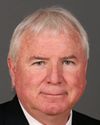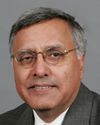Thank you, Mr. Chair. I will start by introducing the team that is with me today. I have my Regimental Sergeant Major, Chief Warrant Officer Wayne Ford, and my personal assistant, Captain Mike Duggan, who have travelled with me from Kingston to join me here today.
Good afternoon, ladies and gentlemen. I am truly pleased to speak with you this afternoon on the subject of preparing our forces for success in land operations, be they missions at home or missions abroad, and today in particular in Afghanistan.
My duties as Commander, Land Force Doctrine and Training, as well as experience over the last decade-plus, permit me to provide you with some insights into the philosophy as well as the reality of our training design and our training delivery. In the end, I hope to leave you with the view that we Canadians continue to produce world-class results with a world-class team of military professionals, alongside valued and dedicated civilian and international partners. We achieve these results through a lifetime of investment in the quality of each military professional, regular and reserve force, and through a progressive and regulated journey of team building, from teams of two to teams of over 2,000, to produce the confidence and competence that allow our people to succeed.
The mission of the Canadian Forces is to defend Canada and Canadians and to promote peace and security abroad. Our land forces, as an entity of the Canadian Forces, must generate and support multi-faceted combat-ready land forces capable of delivering results on the ground in both peace and wartime, here and abroad, today or tomorrow.
Every day, the Canadian Forces soldiers who are not deployed in operations are involved in four main activities: maintaining a strong foundation for the generation of forces; producing forces that are ready to be deployed; transformation and growth. I would now like to focus on the preparatory work we do for our forces that are ready to participate in operations.
The Government of Canada has tasked the Canadian Forces to maintain, amongst other commitments, the capability to provide, one, high-readiness brigade headquarters, and, two, land task forces for expeditionary operations on an enduring basis. The two task-force-level lines of operation represent the main output of the force's management readiness plan for land operations.
The chart behind me illustrates how we have, in the army, earmarked lead units for each of these land task forces from now to 2010.
Allow me to walk you briefly through the chart. In terms of a brigade lead, on the top you will see the three brigade group headquarters of the Canadian Army earmarked for high readiness or mission deployment in any particular 12-month to 18-month period. Below them, we have earmarked the land task forces based on an elite army unit that will deploy in operations or be earmarked for high readiness if they have no mission assigned.
Line of Ops 1, as we call it, is committed until 2009 to Afghanistan, and Line of Ops 2 is a reserve capability available to the Government of Canada for other missions and tasks. Given the level of our effort in Afghanistan, the Line of Ops 2 task forces are smaller, by necessity, than those in Line of Ops 1.
Let us now talk about what we need to do in order to prepare for our operations. Many months or, in some cases, a few years before being operationally ready, our soldiers receive individual instruction and professional training in order to develop general personal skills, skills specific to their area of expertise or combat readiness.
This applies to all ranks, whether we are talking about officers or junior officers. We maintain a very high calibre professional training program. This program is required in order to train our professional leaders and soldiers throughout their career.
Courses and professional development activities lead to advancement in rank, new skills and knowledge, and new responsibilities and authorities for our men and women. Armed with these, we form our teams at the most basic levels and progressively upwards, to the point that we achieve competence in trade in such areas as logistics and signals. That then allows us to group our all-arms team together; that is, our infantry, armour, artillery, engineers, signals, and our service support, such as supply, transport, maintenance, medical, military police, and the like.
These all-arms teams, which constitute the main element of our task forces, participate in steadily increasing levels of collective training, both computer-based and field. Their months of collective training culminate now in an army-directed exercise in our new collective training centre, the Canadian Manoeuvre Training Centre in Wainwright, Alberta, where they join the final additions of the Canadian Forces' team, such as air forces, special forces, and intelligence forces, as well as our whole-of-government partners and, where possible, multinational partners. Here in Wainwright, they experience over a period of four weeks the full replication of the environment they will live in operations before they are declared ready to deploy.
The Canadian Forces presently in Afghanistan include much more than the manoeuvre forces that perform the operations on a daily basis. This diagram provides the details on all of the components of our team currently in Afghanistan.
In Kabul, we have a strategic advisory team as well as an Afghan national training team. In Canada, we have a National Command Element and a National Support Element. There is also the HQ Command, the Multi-National Brigade in charge of the south regional command and the designated tactical group in the province of Kandahar. This group is based on 1 PPCLI. The provincial construction team as well as other officers are located in the city of Kandahar.
In preparation for the replacement of most of these groups occurring this summer and autumn, we have provided the required training and developed some esprit de corps in the group that will replace them.
In the end we guarantee our people that they deploy well-equipped, well-trained, and well-led. This is demonstrated and confirmed through our whole range of training activities, including chain-of-command-led confirmation exercises.
In closing, I should clarify where our staff come from.
This diagram illustrates only the major bases where we generate the land force units and support elements. However, it does not include the bases and the navy and air force executives who make up the rest of the team and who are truly crucial to our success.
In order to illustrate the level of complexity involved in developing a well-trained team, I would like to show you where we are getting the troops who will be participating in the next three operational forces designated for Afghanistan.
In the summer of 2006, the 1 PPCLI Battle Group will be replaced by 1 RCR Battle Group, originating from Petawawa, Ontario. They will be supported by an infantry company from Shilo, Manitoba, with the balance of their forces, service support, and specialists from across the Canadian Forces. Their unmanned aerial vehicle unit will come from 408 Squadron based in Edmonton, Alberta, and soldiers will be provided by 5 Brigade in Valcartier.
Most of their training has taken place in Petawawa and Gagetown, New Brunswick, and was completed in May of this year in Wainwright, Alberta.
They'll be succeeded in February of 2007 by the 2 RCR Battle Group, originating from Gagetown, New Brunswick, and an infantry company will join them from Edmonton, Alberta, and their artillery engineer and service support will come from Petawawa, Ontario. They will train mostly in Gagetown, New Brunswick, and their last training event will be at the Canadian Manoeuvre Training Centre in Wainwright, Alberta.
Finally, the 3rd Battalion of the 22nd Regiment will be deployed in the fall of 2007 and will be originating from Valcartier. The Company of the 3rd Battalion is based in Valcartier, as well as most of the mission elements provided by the Valcartier brigade.
Here, other mission neighbours will originate from across the CF. Training will take place for them in Valcartier and in Gagetown and will culminate again at the Manoeuvre Training Centre in Wainwright.
So in the end, we strive to ensure that our men and women, soldiers all, have the training and conditioning to enable them to perform the mission that Canada has presented them, effectively as a team, with the best possible chances for success, and in a way that allows their experiences and lessons to be passed to those who follow behind. We work to regulate the load on the balance of our army and the Canadian Forces to ensure that we can do missions like Afghanistan, or wherever else conditions require us to go, well into the future.
Thank you. I will now entertain any questions you may have.



